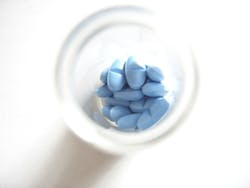Cook County, Ill., adopted an ordinance that will provide more than 5 million residents with convenient access to safe drug disposal. The ordinance makes Cook County the largest jurisdiction in the U.S. to require drug companies to safely dispose of unwanted medications, and adds to the two states, nine counties and two cities in the U.S. with similar drug take-back laws.
More than $1 billion in leftover drugs are thrown in the trash, flushed or consigned to medicine cabinets each year. Prescription drug abuse is the fastest growing drug problem in the U.S., and nearly 70% of people who begin using prescription drugs non-medically get them from a family member or friend, often from medicine cabinets. Drugs left in the home also put seniors, children and pets at risk for accidental poisoning. When flushed or put in the trash, over-the-counter medications and prescription drugs can contaminate our drinking water and harm aquatic species.
"We applaud Cook County for recognizing that drug companies are responsible for safely managing leftover medicine and that drug take-back is a key element in reducing drug abuse and water quality impacts," said Scott Cassel, CEO of the Product Stewardship Institute (PSI). "This law should also save money for Cook County governments, which traditionally bear the burden of paying for proper disposal."
PSI worked closely with local governments and other members of the Illinois Product Stewardship Council (IL PSC), including the Metropolitan Mayors Caucus, to strengthen the bill.
"Our member mayors felt quite strongly about this bill and, in rare fashion, rallied quickly to voice consensus support for it," said Edith Makra, director of environmental initiatives for the Metropolitan Mayors Caucus. "We were therefore enthusiastic about working with PSI to support the bill and strengthen it—and we are elated that it succeeded."
PSI and IL PSC submitted a letter to Chairman Larry Suffredin, the bill sponsor, which expressed support for manufacturer-funded drug take-back while citing two key areas of concern: the need to increase the producer fee to cover the costs of the program and to strengthen a "convenience standard" that promotes consumer access to collection sites.
"We commend the Cook County Board of Supervisors for passing such a critical piece of legislation and are hopeful that the ordinance will create an effective, industry-funded drug take-back program as intended," noted Walter Willis, executive director of the Solid Waste Agency of Lake County, Ill. "We also recognize the need to monitor the implementation of this law in the next few years to ensure that the industry meets its full responsibility for covering program costs."
The final ordinance gives the County Board of Commissioners the flexibility to set a fee that recovers the costs of program implementation. The County Sheriff's office will design and implement the program. The law's convenience standard (one drop-off site per 150,000 county residents and no less than five sites in each of 17 county districts) is less stringent than other laws passed in the country to date. PSI and IL PSC will track program implementation, which is scheduled to begin Jan. 1, 2017, to help Cook County develop the most effective program possible.
"The passage of this ordinance is a vital step forward for the State of Illinois in effectively addressing the impacts of leftover drugs on our communities," said Marta Keane, chair of IL PSC. "We hope this ordinance propels state legislators to pass a law that ensures all residents have access to convenient, safe drug disposal options, and that it paves the way for other municipalities and states around the nation to pursue similar legislation."
Source: Product Stewardship Institute


